40 how often can the mechanism in the nematocyst be triggered?
Jellyfish - Wikipedia Large, often colorful, jellyfish are common in coastal zones worldwide. The medusae of most species are fast-growing, and mature within a few months then die soon after breeding, but the polyp stage, attached to the seabed, may be much more long-lived. Jellyfish have been in existence for at least 500 million years, and possibly 700 million years or more, making them … nematocyst | biology | Britannica nematocyst, minute, elongated, or spherical capsule produced exclusively by members of the phylum Cnidaria (e.g., jellyfish, corals, sea anemones). Several such capsules occur on the body surface. Each is produced by a special cell called a cnidoblast and contains a coiled, hollow, usually barbed thread, which quickly turns outward (i.e., is everted) from the capsule upon proper stimulation.
PDF Chapter Mechanism of Nematocyst Discharge and Its Cellular Control 2 Hypotheses Regarding the Mechanism of Nematocyst Discharge A variety of hypotheses regarding the mechanism of nematocyst discharge have been reviewed (Mariscal 1974; Gupta and Hall 1984; Tardent 1988). These hypotheses can be divided into three categories: (1) the contractile
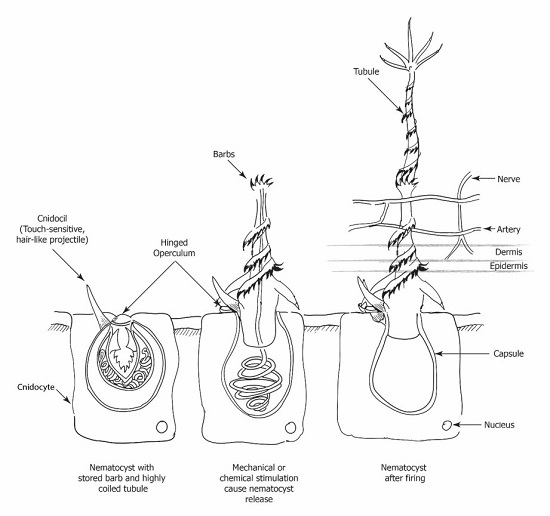
How often can the mechanism in the nematocyst be triggered?
Stinging starlet sea anemones | Stowers Institute for Medical Research Wildly diverse in morphology, and with an evolutionary history dating back between 500-700 million years, these animals share similar stinging structures typically used for predation and protection. The starlet sea anemone, Nematostella vectensis, possesses a complex organelle called a nematocyst manufactured from a specialized cell, a nematocyte. Sequestration of nematocysts by divergent cnidarian predators ... For each of these phyla, we review the phylogenetic distribution, mechanisms, and possible functions of nematocyst sequestration. We estimate that nematocyst sequestration has evolved 9-17 times... Mechanism of Nematocyst Discharge and Its Cellular Control Abstract. Cnidarians possess unique intracellular organelles, cnidae, which discharge by evaginating their tubular contents following certain appropriate stimuli. Every cnida consists of a capsule, a tubule or shaft, or combination of the two, and intracapsular fluid and is contained in a cell called a cnidocyte.
How often can the mechanism in the nematocyst be triggered?. A fast recoiling silk-like elastomer facilitates nanosecond nematocyst ... Background The discharge of the Cnidarian stinging organelle, the nematocyst, is one of the fastest processes in biology and involves volume changes of the highly pressurised (150 bar) capsule of up to 50%. Hitherto, the molecular basis for the unusual biomechanical properties of nematocysts has been elusive, as their structure was mainly defined as a stress-resistant collagenous matrix ... 5 Most Dangerous Jellyfish in the World | Planet Deadly 25.11.2013 · When these stinger cells are triggered the internal pressure builds up to a massive 2,000 psi (136 atmospheres) whereupon it bursts, firing out a toxin harpoon. This is one of the fastest movements in nature and quicker than a bullet [1] Cnidarian internal stinging mechanism | ncbi.nlm.nih.gov. Although evolved to take out prey such as small fish the jellyfish’s venomous … Nematocyst - an overview | ScienceDirect Topics The unexploded nematocysts can be inactivated with topical application for 30 minutes of 3% acetic acid, a slurry of baking soda, or meat tenderizer (papain). Papain should not be left on for more than 15 minutes. Though being the best disarming agent in jellyfish stings, vinegar is ineffective in Portuguese man-of-war stings. Chapter 1: Envenomations - Divers Alert Network Envenomation is a process by which a venom or toxin is injected into another being via a bite, puncture or sting. Envenomation is always due to direct contact with an animal (or parts of it like drifting jellyfish tentacles). There are two possible mechanisms of injection: active, such as jellyfish or cone snails, or passive like lionfish or ...
PDF Sponges & Cnidarian Webquest Worksheet - Science by Shaw Though plant-like in appearance, sponges are actually one of the most primitive animals in the sea. The phylum Porifera contains about 10,000 different species. In the ocean, live sponges can be found in an infinite variety of colors and shapes. Most of them are relatively small, but some varieties can grow to over 6 feet in diameter. Sponges di... PDF Cnidarians: Jellyfish, coral, hydra & sea anemones Cnidarian Basics 31.What causes a Nematocyst to discharge? 32.How often can the mechanism in the nematocyst be triggered? 33. Draw and label the stages of a Nematocyst discharge. Human Uses: 34.How do humans use cnidarians? Status & Threats: 35. How do humans place the survival of cnidarians in danger? en.wikipedia.org › wiki › JellyfishJellyfish - Wikipedia Names. The name jellyfish, in use since 1796, has traditionally been applied to medusae and all similar animals including the comb jellies (ctenophores, another phylum). The term jellies or sea jellies is more recent, having been introduced by public aquaria in an effort to avoid use of the word "fish" with its modern connotation of an animal with a backbone, though shellfish, cuttlefish and ... Sequestration of nematocysts by divergent cnidarian predators ... Nematocysts are small venom-filled capsules containing an eversible tubule (Fig. 2 B), often with spines or barbs, that can be discharged into the tissues of other organisms with very high accelerations, up to 5 million g (Nüchter et al. 2006; Oppegard et al. 2009 ).
Nematocyst Stingers Accelerate Fast — Biological Strategy - AskNature The Strategy. The cells (cnidocysts) produce one large organelle called a nematocyst. The cell forms a layered matrix around the nematocyst that keeps it strong and promotes the generation of 150 bar of pressure within the organelle at maturation. The "lid" of the capsule (operculum) associates with the cell membrane facing out. PDF Cnidarians: Jellyfish, coral, sea anemones & hydra - Ms. Murray's Biology What causes a nematocyst to discharge? 14. How often can the mechanism in the nematocyst be triggered? 15. Draw and label the stages of a nematocyst discharge. Name: _____ Date: _____ Period: _____ Human Uses: 16. How do humans use cnidarians? Status & Threats: ... › animals › dangerous-jellyfis5 Most Dangerous Jellyfish in the World | Planet Deadly Nov 25, 2013 · When these stinger cells are triggered the internal pressure builds up to a massive 2,000 psi (136 atmospheres) whereupon it bursts, firing out a toxin harpoon. This is one of the fastest movements in nature and quicker than a bullet [1] Cnidarian internal stinging mechanism | ncbi.nlm.nih.gov. Learn About Nematocyst | Chegg.com The main function of nematocysts is to produce a harpoon-like thread to inject into their enemy or prey. Their mechanism of action in killing their enemy is by injecting a neurotoxin into them. The toxin is produced by ectodermal gland cells of surrounding nematocysts. Their sting is very painful and can lead to paralysis or death of an organism.
Chapter 7 Flashcards | Quizlet When stimulated to discharge the permeability of the nematocyst changes and the internal osmotic pressure causes water to rush into the capsule. The operculum opens and rapidily increasing hydrostatic pressure within the capsule force the thread outward, the thread turning inside out as it goes.
The Nematocyst: a molecular map of the Cnidarian stinging organelle Inside each nematocyst is a coiled and eversible tubule, which can be discharged to deliver a venomous sting (Beckmann & Özbek, 2012). Venom is a cocktail of toxic compounds, stored inside the ...
Porifera and Cnidaria Flashcards | Quizlet Nematocysts are a specialized cell in the tentacles of a cnidarian containing a barbed or venomous coiled thread that can be projected in self-defense or to catch prey. ... How often can the mechanism in the nematocyst be triggered? Once. Draw and label the stages of a Nematocyst discharge. ... Fossils are most often found in a. soil. b ...
Nematocysts - The Stinging Cells | Zoology for IAS, IFoS and other ... Nematocysts may occur scattered throughout the body surface, except the basal disc. They are abundant on the tentacles and hypostome. On tentacles they form "battery of nematocysts" which are used for paralyzing the prey. A battery consists of one or two large central nematocysts surrounded by 10-12 smaller ones. MECHANISM OF DISCHARGE
en.wikipedia.org › wiki › CnidariaCnidaria - Wikipedia This mechanism has been observed in nematocysts of the class Hydrozoa, sometimes producing pressures as high as 140 atmospheres, similar to that of scuba air tanks, and fully extending the thread in as little as 2 milliseconds (0.002 second).
A molecular filter for the cnidarian stinging response - eLife
Proteome of Hydra Nematocyst - PMC - PubMed Central (PMC) The existence of nematocyst-like organelles in dinoflagellates and other protozoans argues for an evolutionary origin of nematocysts predating multicellularity (Fig. 6). The nematocyst proteome can therefore shed light into the primordial state of the ECM to which the nematocyst's biomechanical requirements probably contributed.
How often can the mechanism in the nematocysts be triggered ... - Answers When the nematocysts are triggered, usually by touching another organism, barbed harpoon-like stingers are shot out and toxins are released. These cells are still active long after the jellyfish is...
Inside the jellyfish's sting: Exploring the micro-architecture of a ... The Stowers team's new model for stinging cell function provides crucial insights into the extraordinarily complex architecture and firing mechanism of nematocysts, the technical name for ...
Formation and discharge of nematocysts is controlled by a proton ... Cnidaria catch and kill their prey by means of nematocysts. A nematocyst consists of a capsule containing a coiled tubule. On triggering, the cyst extrudes this tubule in an extremely rapid manner. The mechanisms and driving forces of discharge are still unknown. We found nematocysts of various cnidarians to be acidic inside and propose that the pH difference between cyst matrix and cytoplasm ...
When do Nematocysts discharge? - Answers After discharge, nematocysts are absorbed by the cnidarian and new nematoblasts must be created from interstitial stem cells (often at the base of the tentacle) and while differentiating into new...
Sequestration of nematocysts by divergent cnidarian predators ... We estimate that nematocyst sequestration has evolved 9-17 times across these four phyla. Although data on the mechanism of sequestration remain limited, similarities across several groups are evident. For example, in multiple groups, nematocysts are trans- ported within cells from the gut to peripheral tissues, and certain types of nematocysts are
Cnidaria - Wikipedia Cnidaria (/ n ɪ ˈ d ɛər i ə, n aɪ-/) is a phylum under kingdom Animalia containing over 11,000 species of aquatic animals found both in freshwater and marine environments, predominantly the latter.. Their distinguishing feature is cnidocytes, specialized cells that they use mainly for capturing prey.Their bodies consist of mesoglea, a non-living jelly-like substance, sandwiched …
Mechanism of Nematocyst Discharge and Its Cellular Control Abstract. Cnidarians possess unique intracellular organelles, cnidae, which discharge by evaginating their tubular contents following certain appropriate stimuli. Every cnida consists of a capsule, a tubule or shaft, or combination of the two, and intracapsular fluid and is contained in a cell called a cnidocyte.
Sequestration of nematocysts by divergent cnidarian predators ... For each of these phyla, we review the phylogenetic distribution, mechanisms, and possible functions of nematocyst sequestration. We estimate that nematocyst sequestration has evolved 9-17 times...
Stinging starlet sea anemones | Stowers Institute for Medical Research Wildly diverse in morphology, and with an evolutionary history dating back between 500-700 million years, these animals share similar stinging structures typically used for predation and protection. The starlet sea anemone, Nematostella vectensis, possesses a complex organelle called a nematocyst manufactured from a specialized cell, a nematocyte.


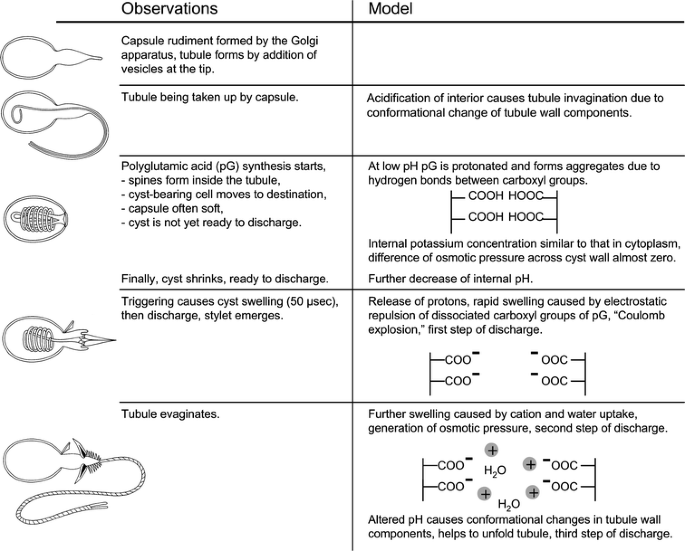
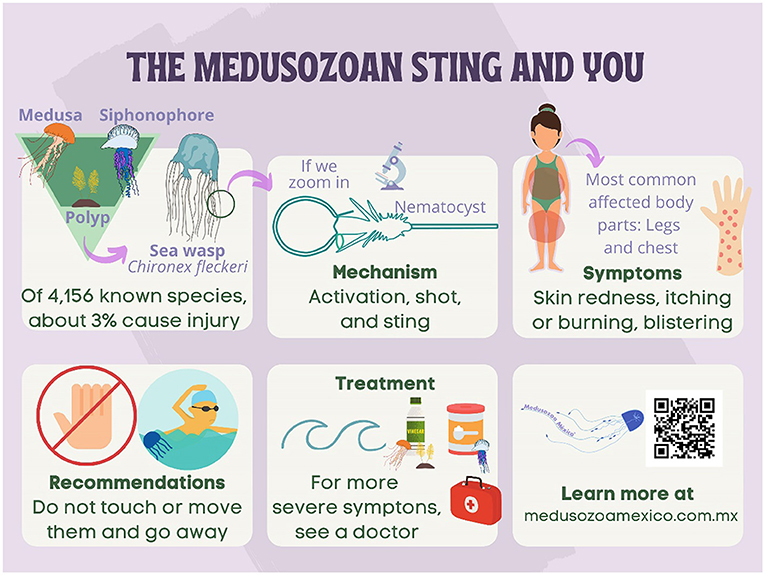
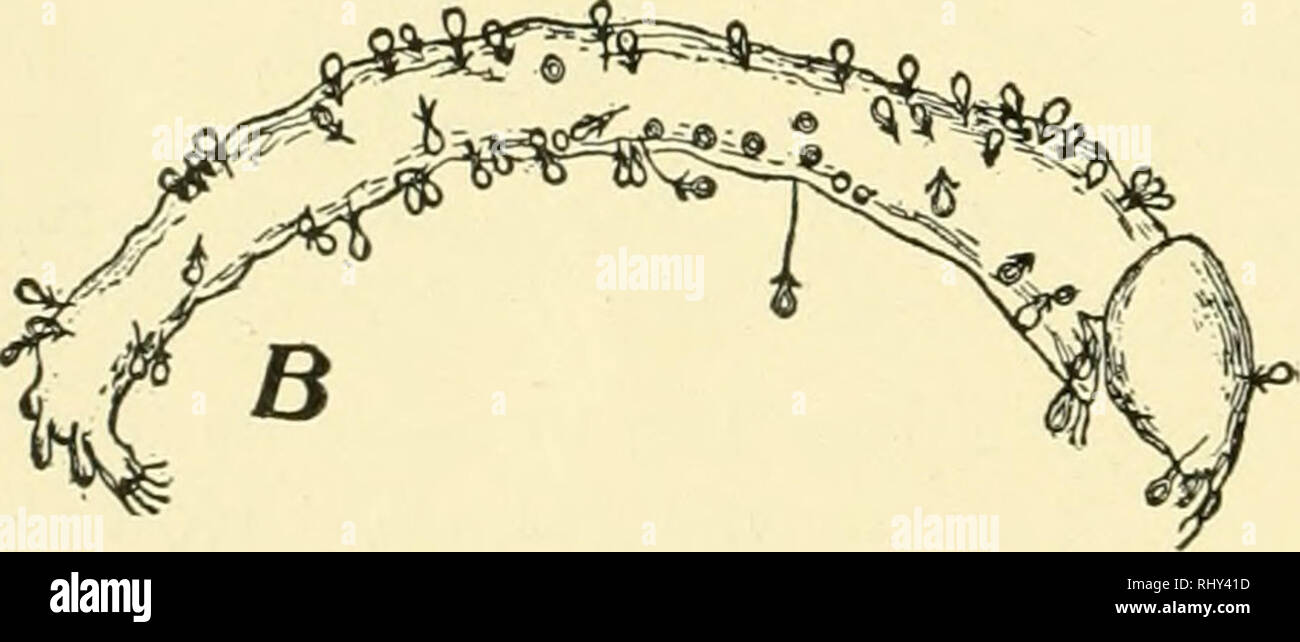


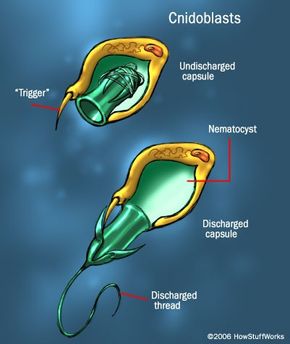


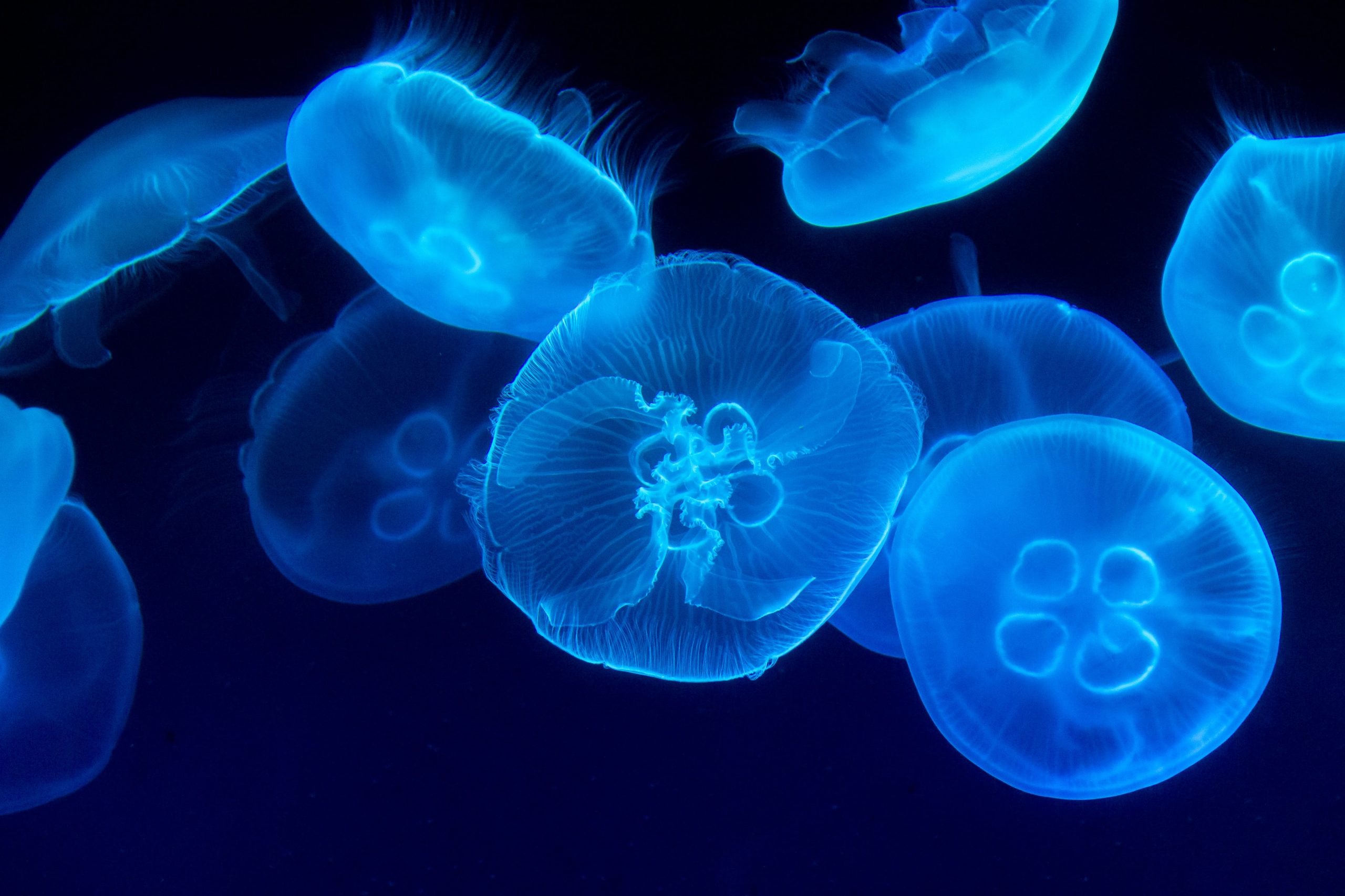
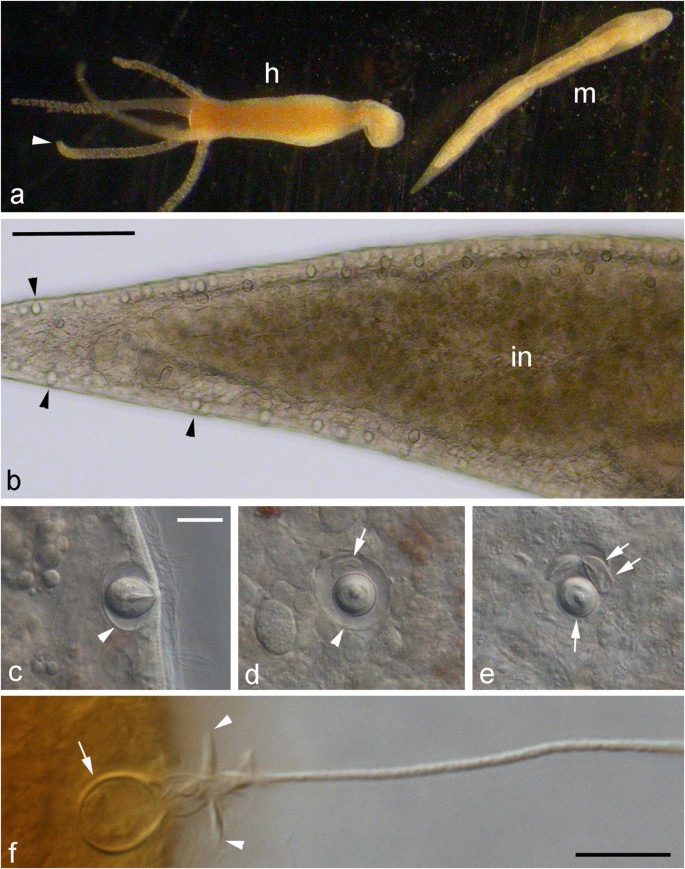
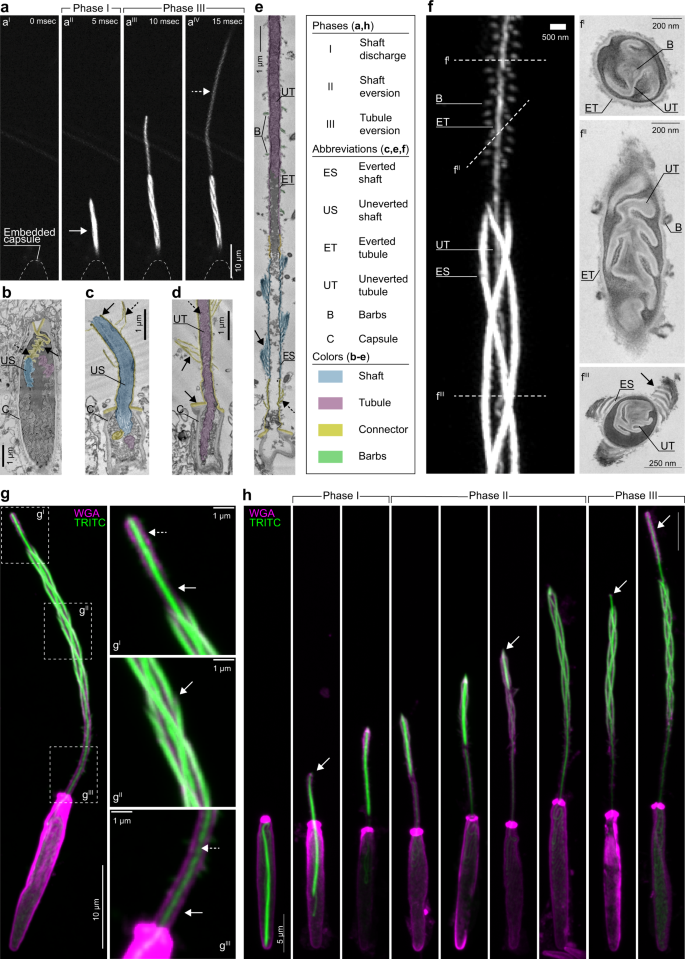

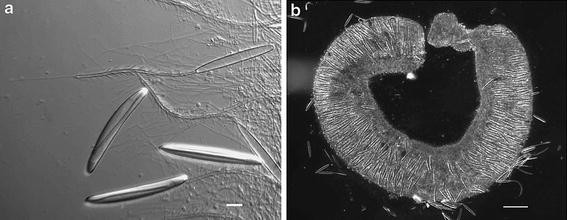




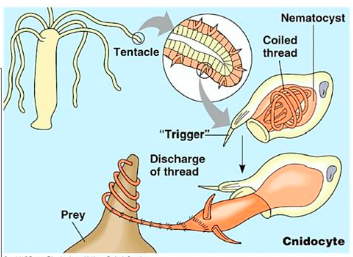


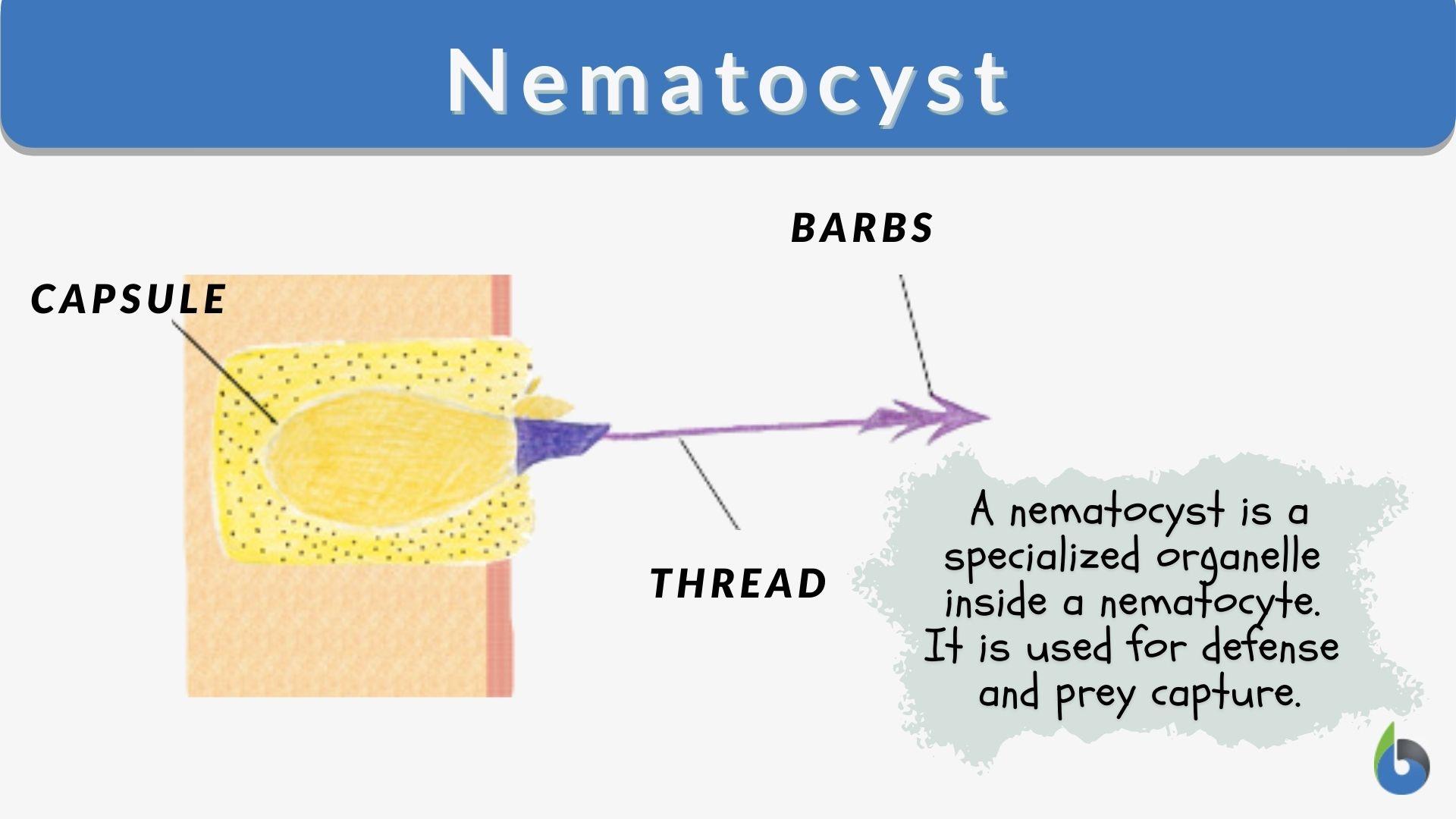
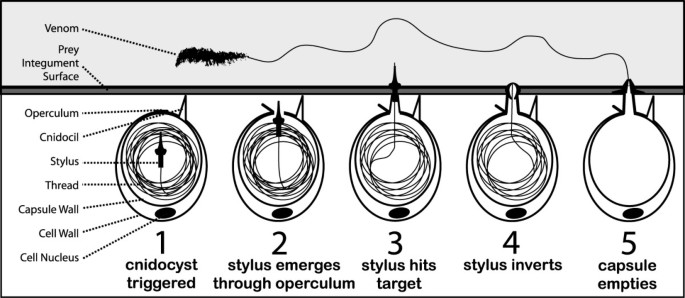



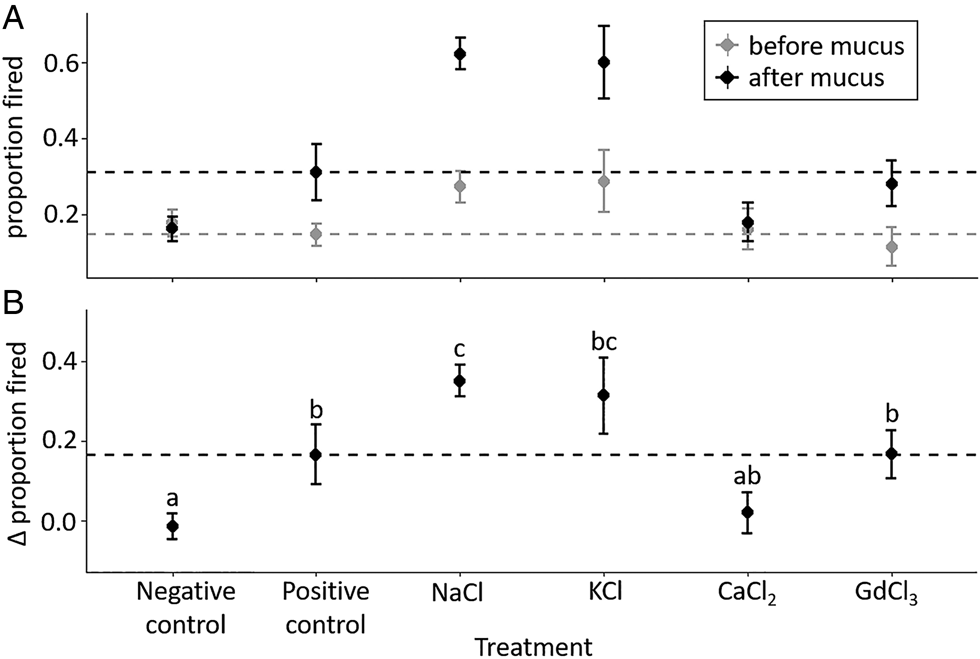

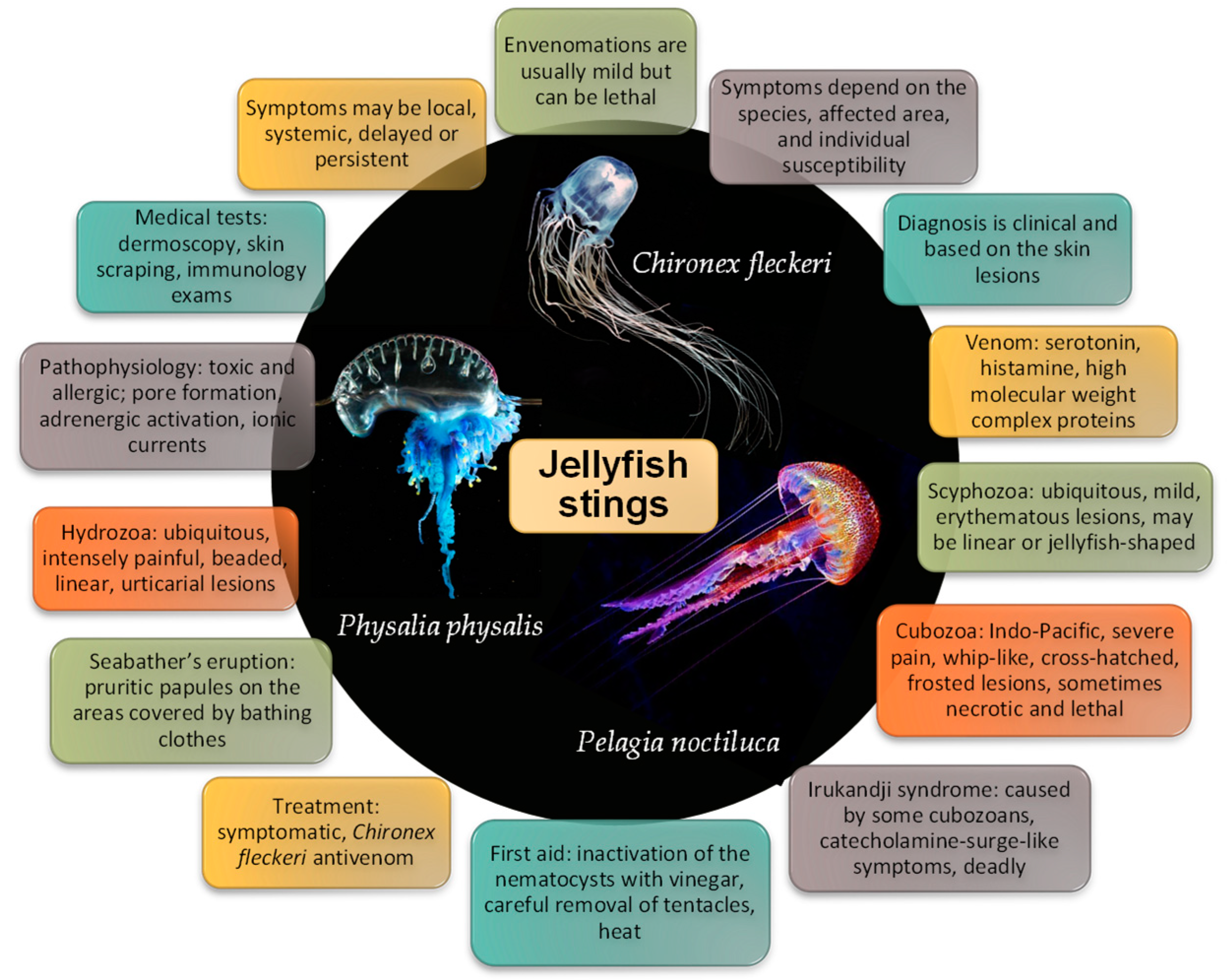
Post a Comment for "40 how often can the mechanism in the nematocyst be triggered?"